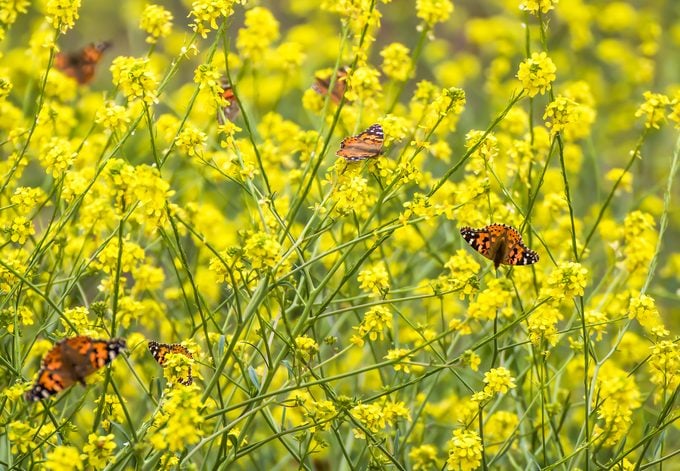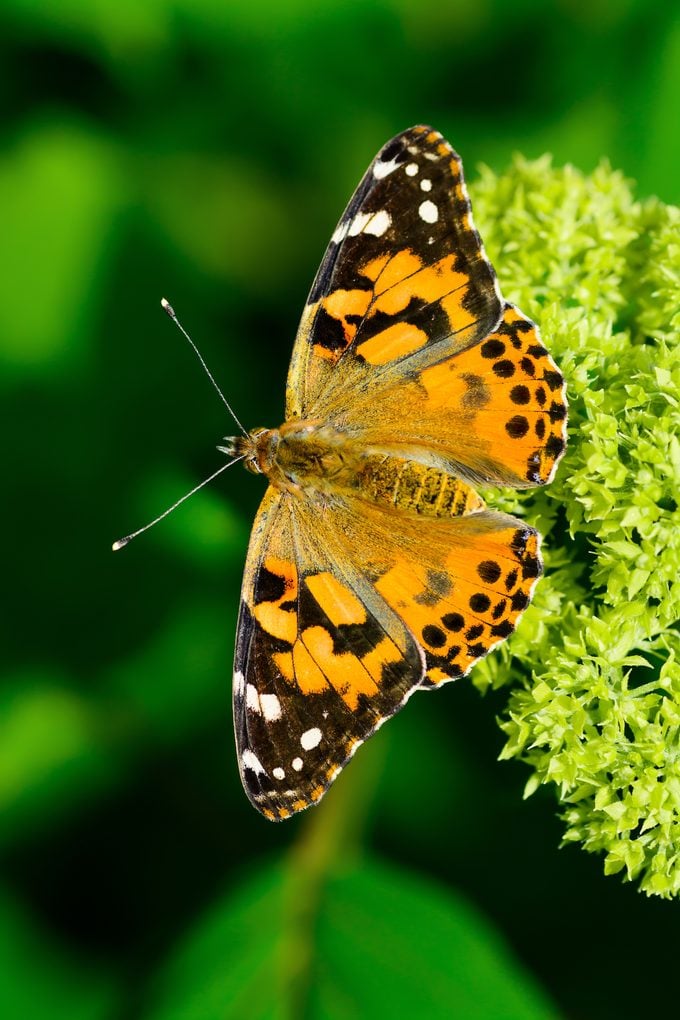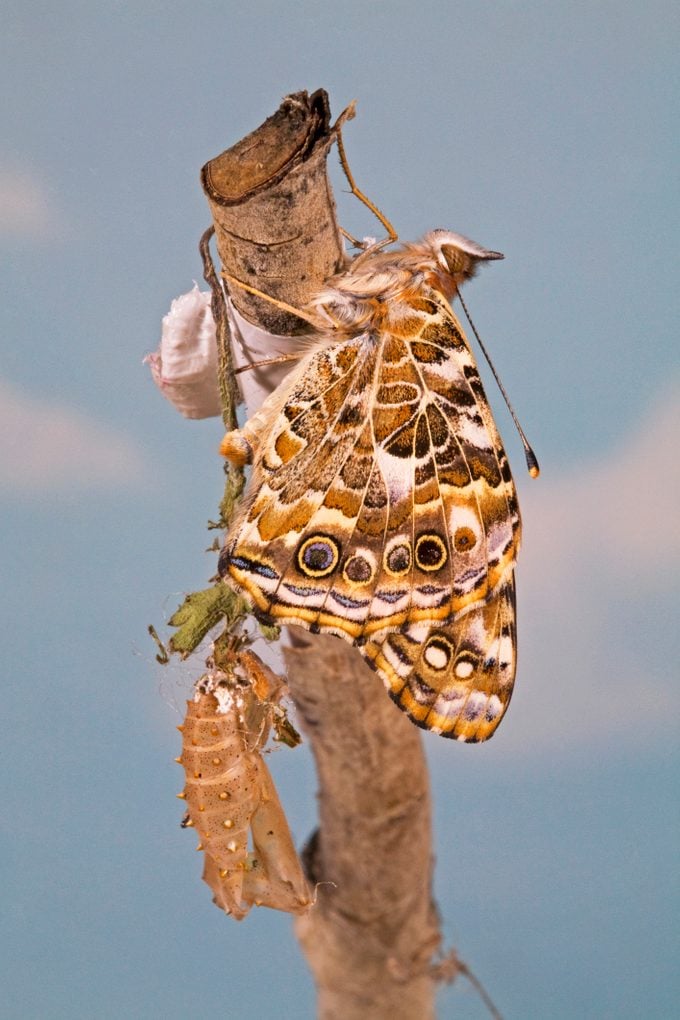Support the Painted Lady Butterfly Life Cycle
Updated: Mar. 21, 2022
Monarchs aren't the only butterflies that migrate! Follow the painted lady butterfly life cycle and learn how you can help them on their migration journey.

When you think of butterfly migration, it’s probably monarch butterflies that first spring to mind. Their epic journey to Mexico each year has caught the public’s imagination, especially as their overwintering grounds have become threatened. But monarchs aren’t the only butterflies that travel long distances. The painted lady also migrates, and its journey can be even more spectacular. One of the most widespread butterflies in the world, the painted lady is commonly found in North America, Europe, Africa and Asia. In the United States, its range stretches from coast to coast, from sea level to mountains and valleys. Adults feed on flower nectar, while their caterpillars eat a huge variety of host plants. They’re unable to withstand freezing temperatures, so when winter comes, painted ladies need to find warmer climates. Here’s what you need to know about the painted lady butterfly life cycle and migration.
Follow the stages of the monarch butterfly life cycle.
Painted Lady Winter Migration
“In North America, most painted ladies overwinter in Mexico,” says Jaret Daniels, who has a doctorate in entomology and is an associate professor at the University of Florida. “Monarchs also overwinter there, but in only a few small areas of mountain forest.” Painted ladies are much more spread out, preferring drier, warmer climates.
Unlike the monarch, the painted lady reproduces throughout its migrations. “Painted ladies breed along the fall migration back south,” says Jaret. “By contrast, migrating fall monarchs typically do not breed.” This means that wherever they are, painted ladies need access to the host plants their caterpillars eat throughout the year, including thistles, hollyhocks and mallows.
How does a butterfly survive winter?
Painted Lady Spring Migration

In warmer seasons, the butterflies spread across most of North America. Painted ladies are fast fliers, fluttering at speeds of up to 25 mph. They return north in the spring, breeding and spreading out to recolonize the U.S.
Painted ladies move in response to changes in the environment. They gather in such large groups for these journeys that they’ve even shown up on weather radar in a swath more than 70 miles wide! Their numbers are erratic and reflect the seasonal conditions. “In good-weather years, there can be huge numbers,” Jaret says. “In bad-weather years, usually those with poor rainfall, their numbers are lower.”
Heavy rains (often caused by El Nino weather patterns) can spark large wildflower blooms in painted ladies’ desert wintering grounds. During these conditions, the painted lady migration is an incredible sight. Low-flying clouds of the butterflies appear in gardens, along highway medians or wherever their favorite nectar plants are found. They travel in waves so large that they’re sometimes even seen on weather radars. Sometimes they make headlines, with millions flying above open country. These years are known as irruption years. It’s hard to predict when they will happen, but the number of participants is massive. During this time, painted ladies become even more widespread. This explains why some areas of the country, especially in the East, see painted ladies some years but not others.
Look for a mourning cloak butterfly in early spring.
Support the Painted Lady Butterfly Life Cycle

As butterfly habitats decline and unpredictable weather patterns create new challenges, their travels become more difficult. Those of us who love these creatures must keep doing our best to help them along the way. Gardeners can easily support painted ladies throughout their life cycle. With so much of their native habitat destroyed by development, butterflies depend more than ever on backyard gardens with host plants. Support healthy populations by making your yard the best possible wildlife habitat it can be.
“Fuel is key,” Jaret says. “Plant a diverse array of blooming plants that offer reliable nectar. Since painted ladies also breed along their route, provide host plants, too.” In addition to spring and summer flowers, plant some blooms that flower in autumn to support these migrating fliers, such as sedum, asters, lantana, bluebeard and pentas. With these easy steps, you’ll help painted lady migrations stay strong and abundant for years to come.
Helping these butterflies helps your yard, too, says Rhiannon Crain, project director for the Habitat Network, a joint project of the Nature Conservancy and the Cornell Lab of Ornithology. “Butterflies are such pivotal organisms in our backyard life cycles. They help pollinate as adults and serve as a food source for birds. Caterpillars keep plants in check even while they refresh the soil with their droppings. If you have a diversity of butterflies and moths in your garden, chances are you’re doing something right.”




















